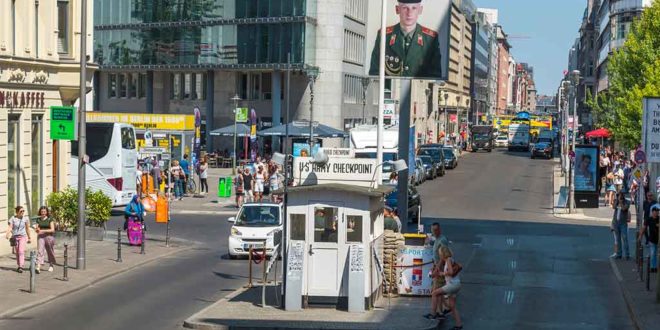Checkpoint Charlie is one of the top sights in Berlin. As one of the three Berlin border crossings through the Berlin Wall, between 1961 and 1990 it connected the Soviet and US sectors in Friedrichstrasse between Zimmerstrasse and Kochstrasse and thus the East Berlin district of Mitte with the West Berlin district of Kreuzberg.
The checkpoint was set up by the Western Allies in August / September 1961 as a result of the construction of the Wall, in order to enable members of their military personnel to continue crossing the sector boundary, during which they were registered and instructed. Controls of all other visitors to East Berlin, as everywhere on the western side, did not take place at Checkpoint Charlie.
As the most famous inner-city border crossing between West and East Berlin from 1961 to 1990, many films about the Cold War were shot here during this time. Checkpoint Charlie, next to the Glienicker Brücke (agent’s bridge), has become the setting for many films and espionage novels. The most famous is the James Bond agent thriller Octopussy or The Spy Who Came In from the Cold.
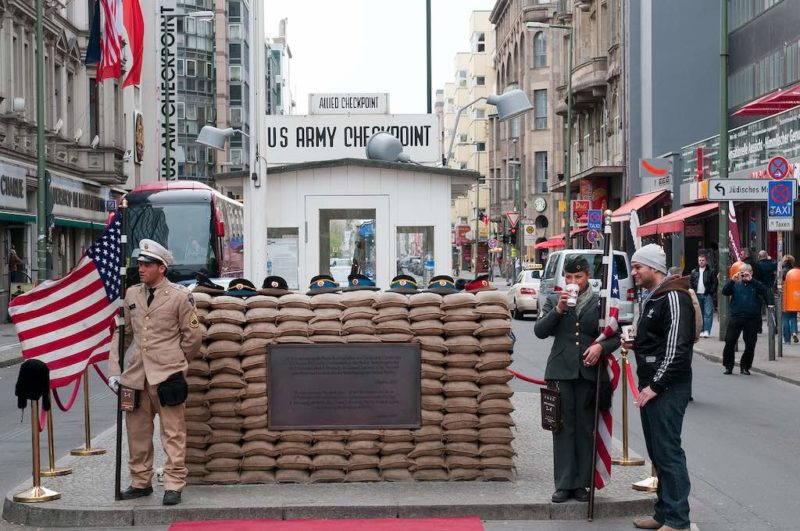
How do you get to Checkpoint Charlie?
While James Bond can still see the real Checkpoint Charlie in 1983, today there is only a replica of the first control barracks on the corner of Friedrichstrasse and Zimmerstrasse . Turnpike, flag and sandbags are modeled on the original location. Today the former border crossing is reminiscent of the Cold War, the Berlin Wall and divided Berlin and is a popular photo opportunity for tourists from all over the world. That is why Checkpoint Charlie is also on the bucket list of the most important Berlin sights.
- Checkpoint Charlie, Berlin
- U-Bahn Station Kochstraße
- Friedrichstraße 43-45, 10117 Berlin-Kreuzberg
History
What does the name Checkpoint Charlie mean?
The Checkpoint Charlie border crossing in Friedrichstrasse connected the US sector with the Soviet sector. The name is derived from the International Spelling Alphabet (Alpha, Bravo, Charlie). After the Helmstedt-Marienborn (Alpha) and Dreilinden-Drewitz (Bravo) border crossings, Checkpoint Charlie is the third checkpoint used by the Allies in and around Berlin.
What happened at Checkpoint Charlie?
At the best known German-German border crossing, Allied posts registered the members of the American, British and French armed forces from September 22, 1961 before their journey to East Berlin. Foreign tourists can find out about their stay there. After the border checkpoint was designated as a crossing point for members of the Allied armed forces, a month later, in October 1961, it was the scene of the tank confrontation. American and Soviet tanks take position and face each other with live ammunition.
Checkpoint Charlie was the scene of numerous escape attempts
Checkpoint Charlie is not only the scene of the Cold War, but also a witness to numerous attempts to escape from East Berlin. An open-air exhibition on the corner of Schützenstrasse and Zimmerstrasse today tells of failed and successful experiences. An installation by the artist Frank Thiel and a plaque also characterize the memorial.
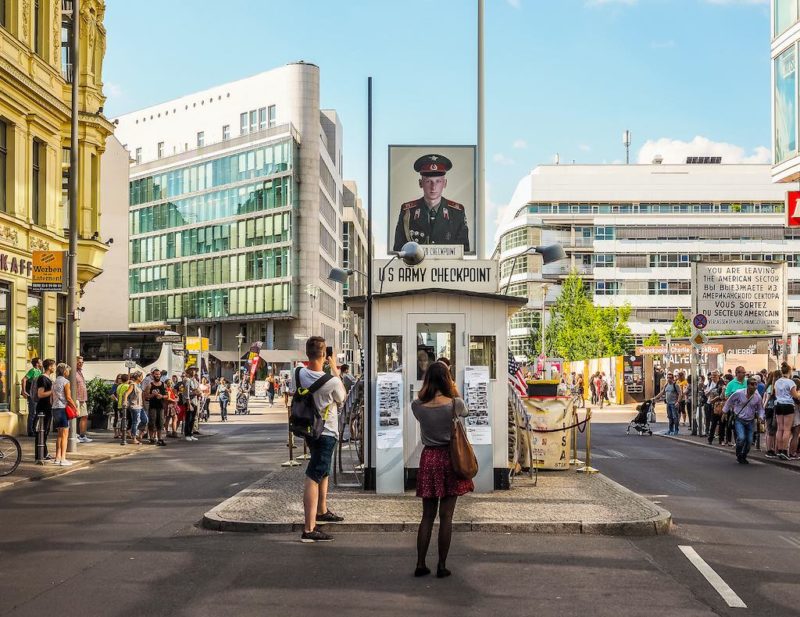
Who is the soldier in the picture?
Everyone who visits Checkpoint Charlie knows this picture. It can be seen in millions of photos today. For 30 years, the media around the world puzzled who the man in this picture is. The answer to the question is very simple. It’s about the former 22-year-old US sergeant Jeff Harper, whom the Berlin photographer Frank Thiel took in 1994 when he was taking photos of the last Allied soldiers in Berlin. Jeff Harper was one of them and thus became the most famous US soldier in Berlin.
Other sights near Checkpoint Charlie
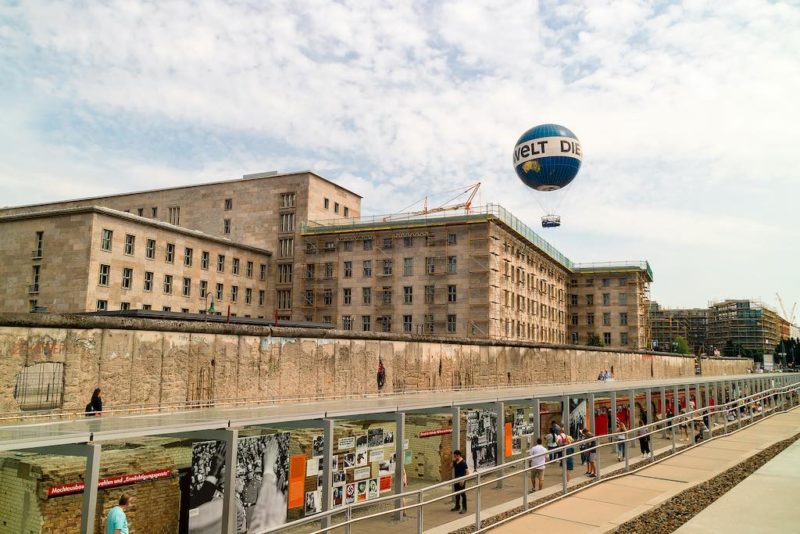
You can learn a lot about the history of the Berlin Wall around the former Checkpoint Charlie border crossing. Here are some attractions in the immediate vicinity.
- Mauermuseum
- BlackBox Kalter Krieg
- asisi Panorama – The Wall
- Trabi Museum und Trabi World
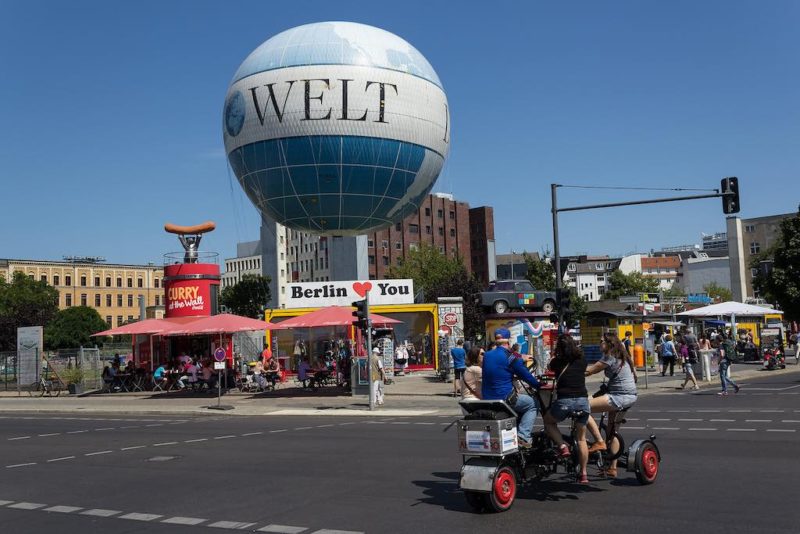
Anyone who is heard can use the Hi-Flyer tethered balloon to soar 150 meters above the ground and take a look at Checkpoint Charlie, the right newspaper district in the right Friedrichstadt and Kreuzberg.
